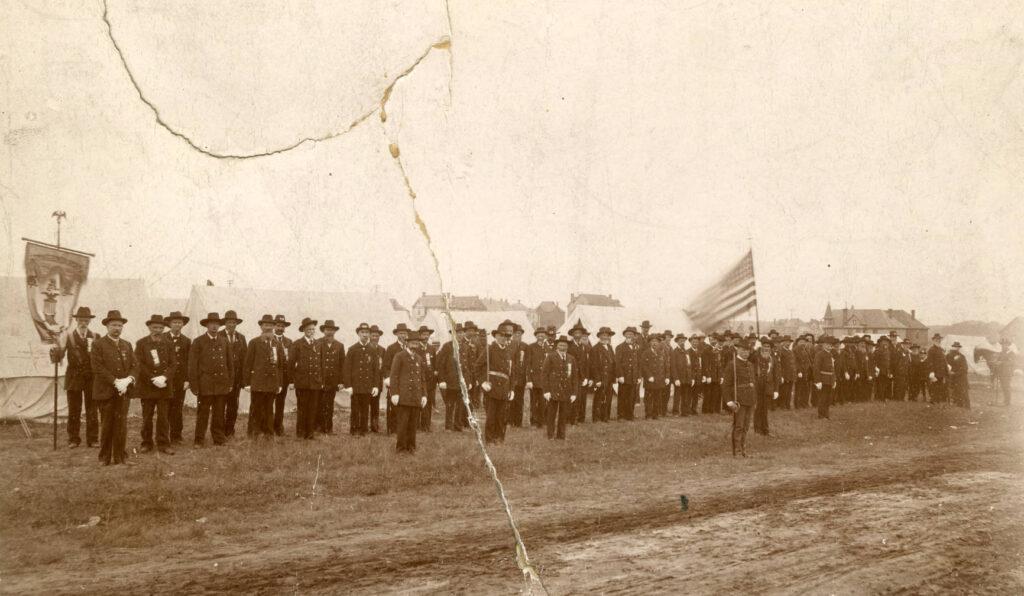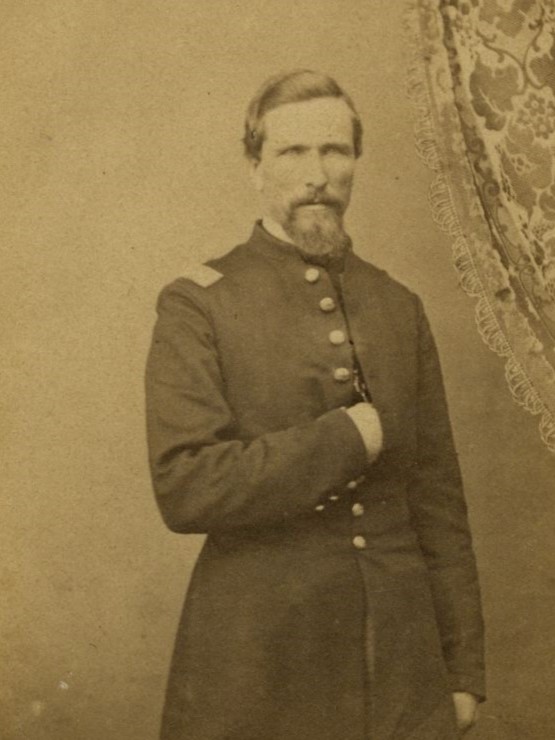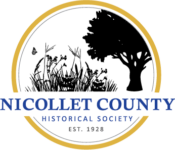By Bob Sandeen
Formation of the GAR
After the Civil War, many communities in the United States formed posts of an organization known as the Grand Army of the Republic (often referred to as the G. A. R.). Founded in 1866, men who had served in the Union Army, the United States Navy, the Marine Corps, and the Revenue Cutter Service during the war were eligible for membership.
As stated in the history of the organization in the October 1, 1930 issue of the Saint Peter Herald, the goals of the Grand Army of the Republic were as follows: “(1) preserve and strengthen those kind and fraternal feelings which bind together the soldiers, sailors and marines who united to suppress the late rebellion, and to perpetuate the memory of the dead; (2) to assist such former comrades in arms as need help and protection and extend needful help to the widows and orphans of those who have fallen, and (3) to maintain true allegiance to the United States of America.”

On July 16, 1883, the Asgrim K. Skaro Post Number 37 was organized in St. Peter. Earlier attempts to organize a post had not received much support. However, as early as Decoration Day (now Memorial Day) on May 30, 1870, an effort was made to recognize those who had served in the Civil War, when Thomas Montgomery and a large group of residents of the community walked to Klein’s Cemetery (now Greenhill Cemetery) to decorate the graves of veterans.
When Jeremiah Donahower was put in charge of the 4th of July activities in St. Peter in 1883, he asked Thomas Montgomery “to invite and take command of all veterans of the late war in Nicollet and Le Sueur counties.” About 100 or more veterans took part in the celebration in Gorman Park on the 4th.
That day, a paper was circulated, and the consent of a significant number of the veterans was obtained to begin the process of organizing a post of the G. A. R. in St. Peter. A petition was sent to the department headquarters, and the new post “was organized and mustered in and officers chosen and installed” on the 16th. The post’s charter, with the signatures of 39 area veterans, soon arrived. Many of them are well-known to local historians.
Who was Asgrim K. Skaro?
The post was named, as was frequently done in other communities, in honor of a local soldier who died during the Civil War. Born in 1829, Asgrim K. Skaro was a Norwegian from Hol, Hallingdal, who came to the United States in 1846. He served in the army at Fort Snelling until 1852. Skaro soon came to the future site of St. Peter with two fellow Norwegians, Matthias and Per Evenson. They can be considered among the founders of the community. When the Civil War began, Skaro was mustered in as the captain of Company E of the 2nd Minnesota Infantry Regiment on July 5, 1861. He served until March 20, 1862, when he was forced to resign for health reasons. On September 23, 1862, he was mustered in as the captain of Company D of the 9th Minnesota Infantry Regiment. He participated in the Dakota War that began in August. Eventually, his regiment was sent to fight the Confederates in Tennessee. Skaro was killed on December 15, 1864, during the Battle of Nashville while leading his company.
Chaplain A. H. Kerr reported that Captain Skaro was shot in the right breast and that he died instantly. Because Skaro was such a highly respected person, his body was brought back to St. Peter, where he was buried in Klein’s Cemetery. An obelisk marks the burial site.
Skaro had married Theodora Laumann of St. Peter in 1857. She appeared on the 1870 St. Peter census with three sons and a daughter. Skaro is remembered today with a street named in his honor, as well as a section of St. Peter known as the Skaro and Evenson Addition.

Thomas Montgomery was the first post commander. In August of 1862, Montgomery enlisted in Company K of the 7th Minnesota Infantry Regiment. He served in the Dakota War until October of 1863, when he and his regiment were sent south to fight the Confederates. Beginning in 1864, he served as an officer in the 76th U. S. Colored Regiment, before moving on to serve in two other U. S. Colored Regiments, the 67th and the 65th.
Commanders of GAR Post 37
Other commanders of the post include Gideon S. Ives, D. Fichthorne, W. C. Moses, Thomas Moses, James B. Turrittin, C. L. Key, Max Hoefer, and Henry Hayes. During the Civil War, Ives served in New York Engineer Regiments, first in the 50th, and then in the 15th. After the war, having moved to St. Peter, he married the daughter of the late Governor Henry A. Swift, who had been a St. Peter resident. Ives served as the mayor and as the county attorney. He was elected to the Minnesota legislature as a senator, and became lieutenant governor of Minnesota from 1891 to 1893.
Members of Post 37
By 1895, there were 140 post members. Skaro’s fellow Norwegian friend, Matthias Evenson, who had served with Skaro in Company D of the 9th Minnesota, was a member. Jeremiah Donahower, who fought in several battles, including Missionary Ridge, had replaced Skaro as the captain of Company E of the 2nd Minnesota in 1862. Ernst Meyer was a bugler in the 1st Minnesota at First Bull Run. Azro A. Stone enlisted with Skaro in Company E of the 2nd Minnesota. He was discharged after being wounded at Chickamauga. After the war, Stone served as sheriff, mayor, clerk of court, and county attorney. Bernt Olmanson, who had served with Donahower, kept a record of his wartime experiences that is available in book form. Photographer Hiram J. Jacoby, District Judge E. St. Julien Cox, and Judge of Probate William G. Gresham were among other prominent members. Gresham was the editor-in-chief of History of Nicollet and LeSueur Counties Minnesota. Civil Engineer Theodore G. Carter rose to the rank of captain of Company K of the 7th Minnesota Infantry Regiment. He was with Gen. Sibley during the Dakota War in 1863. During the Civil War, he was in the Tupelo campaign and in the Battle of Nashville in 1864. After the war, Carter wrote extensive accounts of the early settlement days. In 1930, the Herald stated that only James Clark of St. Peter and William Hunter of Cleveland were still on the membership list. James Clark and his brother, Frank, served in Captain Skaro’s Company D of the 9th Minnesota. Clark died in St. Peter in 1932 at the age of 96.
